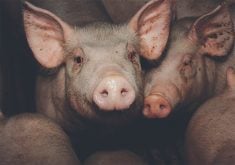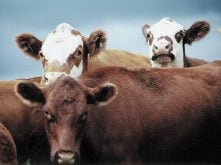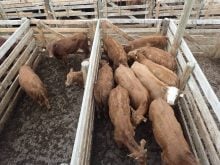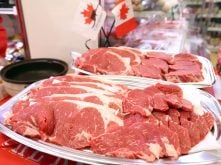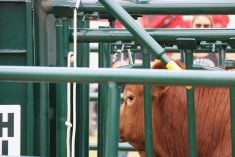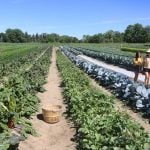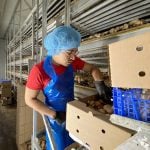TABER, Alta. – When Gerard McKinley gazes across the prairie landscape, he sees the encroaching weeds, salt-ringed sloughs and unrelenting heat burning the wheat.
These problems reduce yields every year, but he has learned working in tandem with nature is the key to his survival as a farmer.
The difference for McKinley is that he is from Australia.
A recent farmer exchange trip to Alberta showed him that despite the twangy Canadian accents punctuated with “eh,” farmers here experience the same problems.
“We have the same problems with soil and disease rotations,” he said.
Read Also
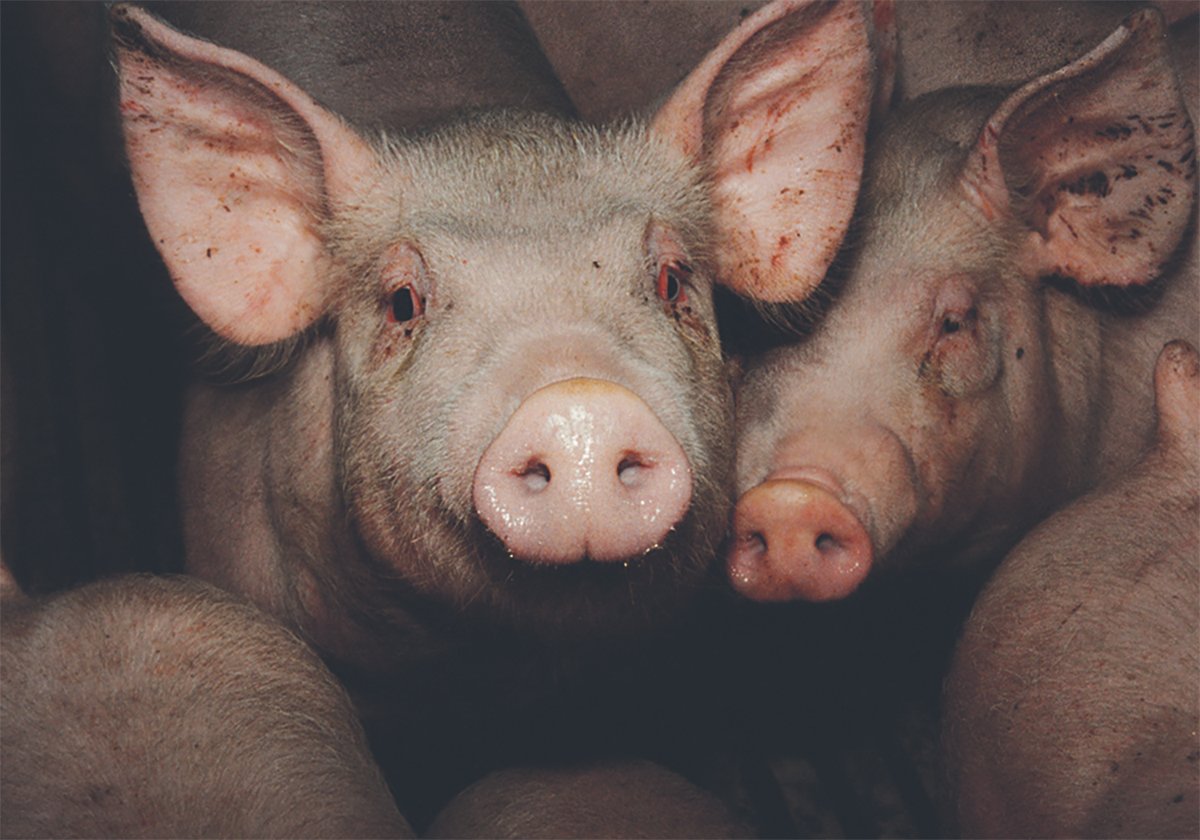
The Western Producer Livestock Report – October 30, 2025
Western Producer Livestock Report for October 30, 2025. See U.S. & Canadian hog prices, Canadian bison & lamb market data and sales insights.
By being billeted at local farms, the Australians were given some insight into how Canadian farmers live.
A visit to the Alberta Sunflower Seed company at Bow Island was astonishing for the group. Eating roasted sunflower seeds was totally foreign and even with lessons from the Canadians on how to suck out the flavor and spit the seeds, McKinley concluded this was not his favorite treat on the 20-day tour.
McKinley, who farms near Dookie in the state of Victoria, came on this trip as a member of Landcare.
This is an Australian program that incorporates a holistic environmental approach to keep farmers on the land while restoring degraded water courses and soils. Working with urban people, they are also striving to live with wildlife, control pests like rabbits and leave the land in better shape than they found it.
There are 3,200 Landcare clubs in Victoria. Initiated by farmers in 1987, McKinley’s club was among the first to form because of serious land degradation and saline seepage.
“About three quarters of the local farmers saw increasing groundwater and salinity as an issue that affected their livelihood,” he said.
A dryland farmer, McKinley raises wheat, fababeans, field peas, lupins, flax and Merino sheep. He receives about 20 inches (508 millimetres) of rain during the Australian winter months of May to December.
“The summers are bone dry,” he said.
Satisfying a lifelong desire to see the Canadian Prairies confirmed for him that the two countries have a lot in common with soil erosion because there are few trees. In addition, they share a growing concern with increasing saline seepage that threatens water and land quality.
This was especially apparent when they visited the farm of Lawrence and Wilma Barany, near Taber. The Baranys are certified seed growers and owners of Chin Ridge Farms.
Barany touched a nerve as he talked about fertility problems with growing patches of alkali in his fields. The only plant that grows there is kochia weed. The Australians may not recognize the hardy and tall weed but they understand problems with reclamation.
“We are going to see big production problems if we don’t deal with it,” said Barany.
Australia was once heavily treed. When the country was colonized the trees were removed and over the years, erosion started and the groundwater began to rise. This brought the salts to the top and now farmers must find ways to restore the balance.
McKinley said he doesn’t farm any land with salt problems but prefers to act before the situation occurs.
“We don’t want to accelerate it with our farming practices,” said McKinley. His topsoil is no more than three inches (76 mm) deep and there is no more than one to two percent organic matter.
The land is phosphorus deficient and it is costly, since most of the fertilizer must be imported. McKinley says fertilizer is his highest input cost.
He uses crop and pasture rotations to recharge the land, combat weeds and preserve moisture. He seeds land to legumes for five years and uses his sheep to graze it. This also controls weeds because the country has pesticide resistance problems in annual rye grass.
Managing water is another critical management area.
“How you manage your water is the overriding principle,” he said.
Australian farmers have a specific formula they use to determine water efficiency.
The percentage of water used is a performance index for each farm. It is calculated by the amount of soil moisture available, seasonal rainfall, evaporation loss multiplied by a yield factor. Each crop has a different factor of water use.



